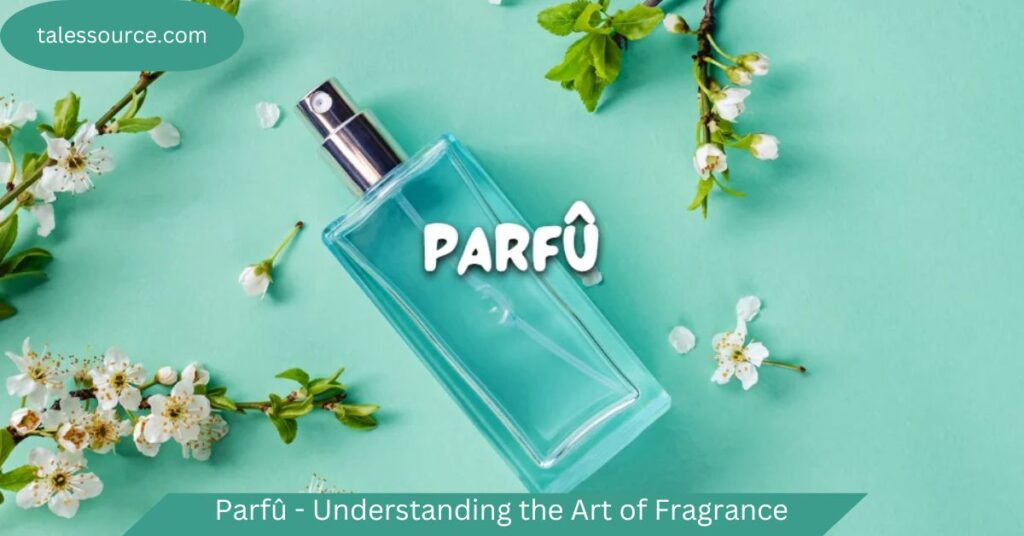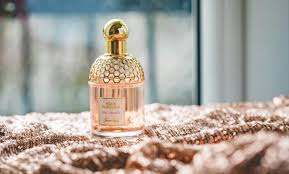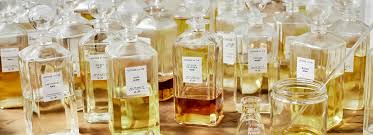Parfû – Understanding the Art of Fragrance

Introduction to Parfû
Parfû is more than a mere fragrance—it’s an art form that has captivated human senses for centuries. Rooted in ancient civilizations, the creation of parfû is a complex process that blends chemistry, creativity, and cultural heritage. Whether you are a novice in the world of perfumes or a seasoned connoisseur, understanding the intricate layers of parfû can transform the way you experience scents.
In this comprehensive guide, we will delve deep into the fascinating world of parfû, offering original insights into its history, production, and the emotional impact it carries. We will also discuss how you can choose the perfect scent and maintain its longevity. Let’s embark on this fragrant journey together, where the keyword “parfû” will be seamlessly integrated to offer you an SEO-optimized reading experience.
The History and Evolution of Parfû
The Origins of Parfû
The journey of parfû can be traced back thousands of years to ancient civilizations such as Mesopotamia, Egypt, and India. Initially, parfû was used in religious ceremonies, with scents believed to connect humans to the divine. The word “parfû” itself is derived from the Latin term “per fumum,” meaning “through smoke,” which refers to the early use of incense in spiritual rituals.
Parfû in Ancient Egypt and Rome
In Egypt, parfû was considered sacred, with pharaohs and priests using scented oils during ceremonies. Egyptian queens like Cleopatra were known for their use of luxurious parfû to seduce and charm. Parfû use then spread to ancient Greece and Rome, where it became an essential part of daily life. Romans would often use parfû in their public baths, considering it a mark of social status.
The Renaissance Revival of Parfû
During the Renaissance, parfû regained its prestige in European courts. It was during this era that the first parfû “houses” were established, with perfumers gaining renown for their skill in crafting personalized scents. French royalty, especially Louis XIV, was known for his obsession with parfû, which earned France its reputation as the epicenter of modern perfumery.
Read More: David Choe Net Worth – Exploring the Journey of a Multidisciplinary Artist
How Parfû is Made

The Basics of Parfû Composition
Parfû is a complex blend of aromatic compounds, solvents, and fixatives. The art of parfû creation lies in balancing these elements to create a harmonious scent. At its core, a parfû consists of three primary layers: top notes, heart notes, and base notes. Each plays a unique role in the fragrance experience.
Top Notes
Top notes are the first scents you perceive when you apply a parfû. These are light, volatile compounds that evaporate quickly, leaving an initial impression. Common top notes include citrus, herbs, and light florals.
Heart Notes
After the top notes dissipate, the heart notes (also known as middle notes) emerge. These are more robust and make up the core of the fragrance. Popular heart notes include lavender, rose, and jasmine.
Base Notes
The base notes are the final layer and are responsible for the longevity of the parfû. These heavier compounds, like sandalwood, musk, and amber, linger on the skin for hours.
Extraction Methods
Creating parfû involves extracting essential oils from natural sources such as flowers, fruits, and spices. The most common extraction techniques include distillation, cold pressing, and solvent extraction. Each method affects the scent and quality of the parfû.
Understanding the Different Types of Parfû
Parfû Concentrations
Not all parfûs are created equal. Depending on the concentration of aromatic oils, the intensity and longevity of the fragrance can vary.
Parfum (Extrait)
This is the most concentrated and expensive form of parfû, containing between 20-30% essential oils. It lasts the longest—typically up to 8-12 hours.
Eau de Parfum (EDP)
Eau de Parfum contains a slightly lower concentration of essential oils (15-20%) but still offers a long-lasting scent, around 6-8 hours.
] Eau de Toilette (EDT)
This type of parfû is lighter, with only 5-15% essential oils. It’s perfect for everyday wear and usually lasts 3-5 hours.
Eau de Cologne (EDC)
With only 2-4% essential oils, Eau de Cologne is the lightest of all and lasts around 2-3 hours. It is ideal for a quick, refreshing fragrance boost.
The Emotional and Psychological Impact of Parfû
How Scents Influence Moods
Scent plays a significant role in human emotions and memories. Certain fragrances can evoke nostalgia, calm the mind, or even energize the body. For example, lavender is known for its calming properties, while citrus scents are invigorating.
Parfû as an Expression of Identity
Choosing a parfû is a deeply personal experience, often reflecting one’s mood, personality, and even aspirations. Some people gravitate toward floral scents to evoke elegance, while others prefer spicy or woody notes to project strength.
The Role of Pheromones
While many parfûs are crafted for their scent alone, some fragrances contain pheromones, which are believed to influence attraction between individuals.
How to Choose the Right Parfû for Your Personality
Identifying Your Scent Family
The world of parfû is divided into several scent families, each evoking a different mood. Understanding which family resonates with your personality can help you choose the perfect fragrance.
Floral Scents
Floral fragrances are often associated with romance, femininity, and warmth. If you’re someone who enjoys elegance and grace, a floral parfû may be your perfect match.
Woody Scents
Woody parfûs are rich and grounding, evoking strength and mystery. These fragrances often feature notes of sandalwood, cedarwood, and patchouli.
Citrus Scents
Citrus fragrances are refreshing and energizing. If you are outgoing and lively, a citrus parfû might be ideal for you.
Caring for Your Parfû
How to Store Parfû
To ensure your parfû retains its potency, it’s essential to store it in a cool, dry place away from direct sunlight. Heat and light can degrade the oils, causing the scent to fade over time.
Proper Application Techniques
The best way to apply parfû is to spray it on pulse points such as your wrists, neck, and behind the ears. These areas emit heat, which helps to diffuse the scent more effectively.
Read More: Jiniphee OnlyFans Leaks – Comprehensive Guide to Privacy Breaches and Cybersecurity
Parfû and Its Cultural Significance Around the World

Parfû in the Middle East
The Middle East has a long-standing tradition of perfumery, with oud and amber being central to their fragrance compositions. Parfûs in this region are often more intense and longer-lasting, reflecting the cultural preference for opulent scents.
Parfû in Europe
Europe, particularly France and Italy, has played a significant role in shaping modern perfumery. The region’s history of parfû production has set global standards for craftsmanship and innovation.
Conclusion:
Parfû is an extraordinary fusion of art and science, encapsulating emotions, memories, and identities. As you explore the world of parfû, remember that each fragrance tells a unique story. From ancient rituals to modern-day expressions of individuality, parfû continues to enchant and inspire.
FAQs
1. What is the difference between parfum and eau de parfum?
Parfum contains a higher concentration of essential oils, making it last longer and more intense than eau de parfum, which has slightly less oil content but still offers longevity.
2. How should I store my parfû?
It’s best to store parfû in a cool, dark place away from heat and direct sunlight to maintain its quality and scent for a longer time.
3. Can parfû expire?
Yes, parfû can expire. Typically, it lasts 3-5 years if stored correctly. Over time, the fragrance may change due to exposure to air, light, and heat.
4. How do I make my parfû last longer on my skin?
Applying parfû on moisturized skin and focusing on pulse points can help make the scent last longer.
5. What is the difference between top, heart, and base notes?
Top notes are the initial scent upon application, heart notes form the core of the fragrance, and base notes are the longest-lasting part that stays on your skin.
6. Can I layer parfûs?
Yes, layering parfûs is a great way to create a personalized scent. Just be mindful of combining complementary fragrances to avoid clashing notes.
7. What are pheromones in parfû?
Pheromones are chemical compounds believed to trigger attraction. Some parfûs include synthetic pheromones designed to enhance your appeal.
8. Is there a specific time of day to wear parfû?
There are no strict rules, but lighter fragrances are often worn during the day, while richer, more intense scents are reserved for the evening.
9. Why do some parfûs smell different on different people?
A person’s skin chemistry, diet, and even environment can influence how a parfû smells on them.
10. What is the best way to test a parfû?
The best way to test a parfû is by spraying it on your wrist or a blotter card and allowing it to develop for at least 15 minutes to experience all its notes.
This comprehensive guide not only introduces you to the world of parfû but also helps you appreciate its complexities and cultural significance.
Read More:
Trina Vega SDMP – A Comprehensive Analysis of Her Journey and Impact
Digper2 – The Next Evolution in Digital Performance
Coded Warlock Notes – Unveiling the Mystery of WoW’s Cryptic Messages





